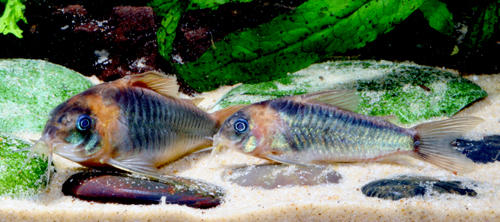On the day I was to visit the Aquarama 2011 in Singapore, I had the inkling that I would be meeting some luminaries of the catfish world, and very cleverly I brought along my Identifying Corydoradine Catfish book, which is recognised by most corydoras keepers around the world as the seminal work on corydoras identification. The writers of the book are of course long time authorities on the species and I'm very glad I did bring the book, because at the Pleco Club Singapore booth, I had the rare pleasure of meeting Hans-Georg Evers.
After getting the pleasantries (and the autograph taking =) ) out of the way, we started to talk corydoras, and it's obvious that this guy really knows his stuff! Having gone personally to collect corydoras and plecos in South America, and also having the record of breeding almost 107 different species already (if you're reading Hans, I hope I got this right!) there is no question that he has vast experience in the husbandry of each different species. Talking to him was enough to convince me to sign up at CorydorasWorld that very night, to read the threads that he was talking about in our conversation! Well enough of the narratives, here is a gem of a picture that we took after the discussions =)
 |
With an international and a local legend
From left: me, H-G Evers, Irwin |
Shortly afterwards, I also got to meet another famous personality in the catfish world, Ingo Seidel. Although I had a big regret, because I didn't bring the book he wrote down to the exhibition as well (I didn't expect to get lucky twice in a day) I did get his picture along with the original Singapore pleco guru, who kept the original God of Pleco, a 28" monster LDA65 male with 6" chew chew (like him):
 |
More famous catfish personalities!
From left: Allen, Ingo Seidel, me |
Well, suffice to say that I received as many lessons on catfish husbandry in a day, as I learnt in 3 years of keeping these special fish. Good job to everyone who made Aquarama a success. It was amazing to meet so many like-minded friends whom I have not met for a while, some for a few months, and some for a few years! It's events like this that bring us hobbyists together. Here's wishing good health for everyone, and hope to see you all again at the next Aquarama 2013!











